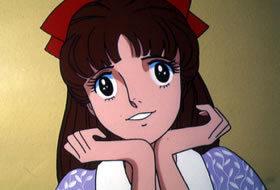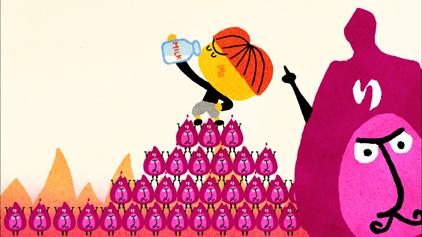The appeal and reviews of "Haikara-san ga Tooru": A good old-fashioned romance brought to the modern era

Haikara-san ga Tooru - A timeless tale of romance and adventure"Haikara-san ga Tooru" is a TV anime series based on the original shojo manga by Waki Yamato, which aired from 1978 to 1979. The story is set in Tokyo during the Taisho era and depicts the growth and love life of the free-spirited heroine, Benio Hanamura. Below, we will introduce detailed information and reviews of this work, as well as recommended points. ■ Public MediaTV anime series ■ Original Mediacomics ■ Broadcast periodJune 3, 1978 - March 31, 1979 Every Saturday 19:00-19:30 ■Broadcasting stationBroadcast on the Asahi Broadcasting Corporation (ABC) network ■Frequencieshalf an hour ■ Number of EpisodesEpisode 42 ■Original Story・Original story: Waki Yamato "Haikara-san ga Tooru" Kodansha Comics ■ DirectorDirected by: Hikoya Magose and Kazuyoshi Yokota ■ ProductionProduced by Nippon Animation, Asahi Broadcasting Corporation. Production cooperation: Trans Arts ■Works©Yamato Waki/Kodansha, Nippon Animation ■ Story The story is set in Tokyo in the 7th year of the Taisho era. The daughter of Imperial Army officer Major Hanamura, Benio, is a 17-year-old girl with a sophisticated and curious personality who is more interested in swordsmanship than in etiquette. Worried about her future, her father arbitrarily decides on her fiance. ■Explanation The original work is a masterpiece by Yamato Waki, a master who has held the leading position among Kodansha-affiliated shojo manga artists for over 20 years. ■Cast・Hanamura Benio/Yokozawa Keiko・Ijuin Shinobu/Mori Koji・Mori Ranmaru/Sugiyama Kazuko・Ushigorou/Masuoka Hiroshi・Kitakoji Tamaki/Yoshida Rihoko・Ijuin's wife/Mine Atsuko・Major Hanai/Nagai Ichiro・Drunk Boy/Kentaro Kimotsuki・Nanny/Suzuki Reiko・Second daughter Kisaragi/Yamada Reiko・Count/Miyauchi Kohei・Aoe Tousei/Inoue Makio・Onjima Morigo/Yasuhara Yoshito・Narrator/Nagai Ichiro・and others ■ Main staff・Original story: Waki Yamato, "Haikara-san ga Tooru" (Kodansha Comics)・Producer: Koichi Motohashi・Production management: Mitsuru Takakuwa・Planning: Shoji Sato・Music: Masuhiro Yamaguchi・Direction: Hikoya Magoshi, Kazuyoshi Yokota・Producer: Akira Negoro・Screenplay: Futoshi Takahashi・Character design: Tsutomu Shibayama, Susumu Shiraume, Kuraku Asahi・Chief animation directors: Kazuo Tashiro, Toji Mizumura, Yoshiyuki Kishi, Sadayoshi Tominaga, Takashi Saijo, Tatsuhiro Nagaki, Eiji Tanaka・Key animation (original animation): Noboru Kominato, Hirokazu Ishino, Mariko Iioka, Tama Productions, Takashi Saijo, Shigeko Sekine, Satoshi Yamaguchi, Kumi Omori, Mitsuharu Kajitani, Shigeko Kaneko, Masaharu Morinaka, Midori Yamamoto, Motoyoshi Kozono, Satoshi Kokei, Hiromasa Akiyama, and others・Art director: Kono Jiro, Setouchi Hajime・Director of photography/Ogiwara Toru・Sound recording director/Fujino Sadayoshi・Finishing inspection/Suzuki Toshio・Animation/Trans Arts, Tamapro, Studio Joke, Tomipro・Finishing/Studio Robin・Background/Kawamoto Seihei, Atelier Roku, Kato Takafumi, Matsumiya Masazumi (even numbers), Mukuo Takamura, Mukuo Studio, Sato Masayuki, Yajima Miyoko, Numai Nobuo, Tsuboi Hideko, Fujiwara Noriko (odd numbers) ■ Main CharactersCharacter design: Tsutomu Shibayama, Susumu Shiraume, Kuraku Asahi Animation Director: Kazuo Tashiro, Toji Mizumura, Yoshiyuki Kishi, Sadayoshi Tominaga, Takashi Saijo, Tatsuhiro Nagaki, Eiji Tanaka ■Subtitle・1/Benio is a Beautiful Seventeen Years Old (1978/06/03) ■ Related works・Theatrical version of "Haikara-san ga Tooru" Part 1 and Part 2 ■ Theme songs and music・OP Evaluation and Impressions"Haikara-san ga Tooru" is a story of romance and adventure set in Taisho-era Japan, and the historical background and charm of the characters have drawn many viewers. In particular, the main character, Hanamura Benio, is charming with her free-spirited and curious personality, and her growth and love life deeply moved viewers. Furthermore, her romance with Ijuin Shinobu was portrayed as a timeless and universal love story, attracting many fans. The anime version emphasized the comical elements of the original work, and provided viewers with laughter and emotion through the exploits of characters such as the good-natured Ushigorou, the cross-dresser Ranmaru, and the drunken Doji. In particular, the character designs by Tsutomu Shibayama brought out the charm of the original work to the fullest, giving the anime its own unique brilliance. Music was also an important element in enhancing the appeal of this work. The opening theme "Haikara-san ga Tooru" and the ending theme "Gokigen Ikaga? Benio desu" were sung by Shosuke Sekita and composed by Masuhiro Yamaguchi, and successfully enhanced the atmosphere of the work. These songs are still loved by many fans today. Recommended pointsWe recommend "Haikara-san to Tooru" for the following reasons: 1. Historical background and storySet in Tokyo during the Taisho period, this work realistically depicts the social situation and culture of the time, allowing viewers to feel as if they have traveled back in time to that era. In addition, the story of Benio's growth and love is a timeless and universal theme that will resonate with many viewers. 2. Charming charactersThe main character, Benio Hanamura, has a free-spirited and curious personality that is appealing, and her actions and growth will draw viewers in. Her romance with Shinobu Ijuin also has many touching scenes that will move viewers' hearts. In addition, unique characters such as Ushigorou, Ranmaru, and Shuran Doji add color to the story and entertain viewers. 3. MusicThe opening and ending songs are an important element in enhancing the atmosphere of the work. With the vocals of Shosuke Sekita and the music composed by Masuhiro Yamaguchi, viewers can be deeply immersed in the world of the work. These songs are still loved by many fans and enhance the appeal of the work. 4. Unique animation productionThe anime version emphasizes the comical elements of the original work, providing viewers with laughter and emotion. In particular, the character settings and direction have a unique brilliance that is unique to the anime, making it enjoyable for both fans of the original work and anime fans alike. Conclusion"Haikara-san ga Tooru" is a story of romance and adventure set in Taisho-era Japan, and its historical background and charming characters have attracted many viewers. In particular, the protagonist Hanamura Benio's growth and love life deeply touched viewers, and it is depicted as a timeless and universal love story. The anime version also emphasized the comical elements of the original work, providing viewers with laughter and emotion. Music is also an important element in enhancing the appeal of the work, and the opening and ending songs are still loved by many fans today. This work has many recommended points, such as the historical background and story, the charming characters, music, and the unique animation direction, so we definitely recommend giving it a watch. |
Recommend
Wonder Woman 1984 box office performance fell short of expectations, with China box office at $18.8 million
According to foreign media IGN, after the release...
"My Neighbor is 801 R" review: A soothing anime filled with laughs and emotions
"801-chan Next Door R" - The BL world o...
The director's cut of Justice League leaked ahead of time, but the title is Tom and Jerry
The director's cut of "Justice League&qu...
Kevin Feige: "Deadpool and Wolverine" opens the MCU "mutant" generation
Marvel Studios boss Kevin Feige recently said tha...
The new movie "Gundam G: Restoration 3" is scheduled to be released on July 22
The Gundam theatrical animation series "Gund...
Review of Episode 3 of "21 Emon" "Go to Space! Barefoot Princess": An emotional space adventure
"21 Emon: Go to Space! Barefoot Princess&quo...
New trailer for disaster film "Meet the Sharks" shows Stallone's daughter fighting a great white shark
Recently, the "Shark Attack" trailer an...
Japanese girl was arrested for fraud after she covered the price tag of a high-priced figurine with a 100 yen price tag
According to Japanese media reports, a 22-year-ol...
The box office of "The Wandering Earth" has exceeded 1 billion, and all efforts are devoted to blocking the spread of piracy
With labels such as "New Year's Day"...
DC's comeback depends on this? The post-production of the superhero blockbuster "Aquaman" has been completed!
According to foreign media reports, Warner and DC...
12 Years a Slave screenwriter John Ridley's Eternals TV series canceled by Marvel executives
In the early days of the Marvel Cinematic Univers...
Netflix's original animated film "Bubble" will be released on April 28
Netflix's new original animated film "Bu...
Sonic the Hedgehog 4 movie to start production in February
Sonic the Hedgehog 3 may have just hit theaters o...
"Kung Fu Panda 4" trailer will be released, Hans Zimmer will return to compose music
According to foreign media reports, the famous mu...
The 20th anniversary commemorative watch of the masterpiece "Little Witch DoReMi" is unveiled, with excellent workmanship and novel design
The classic masterpiece "Ojama DoReMi" ...









